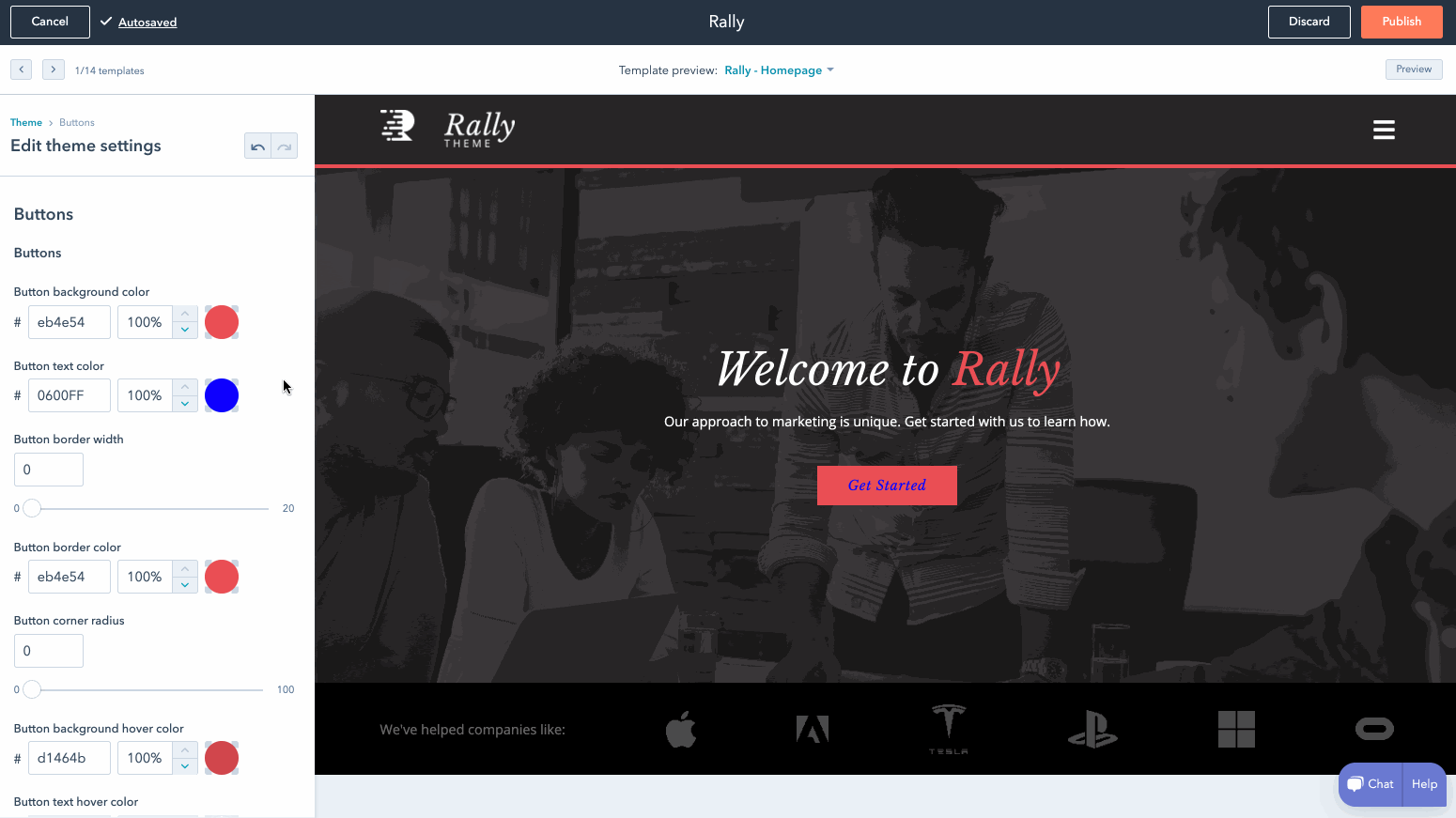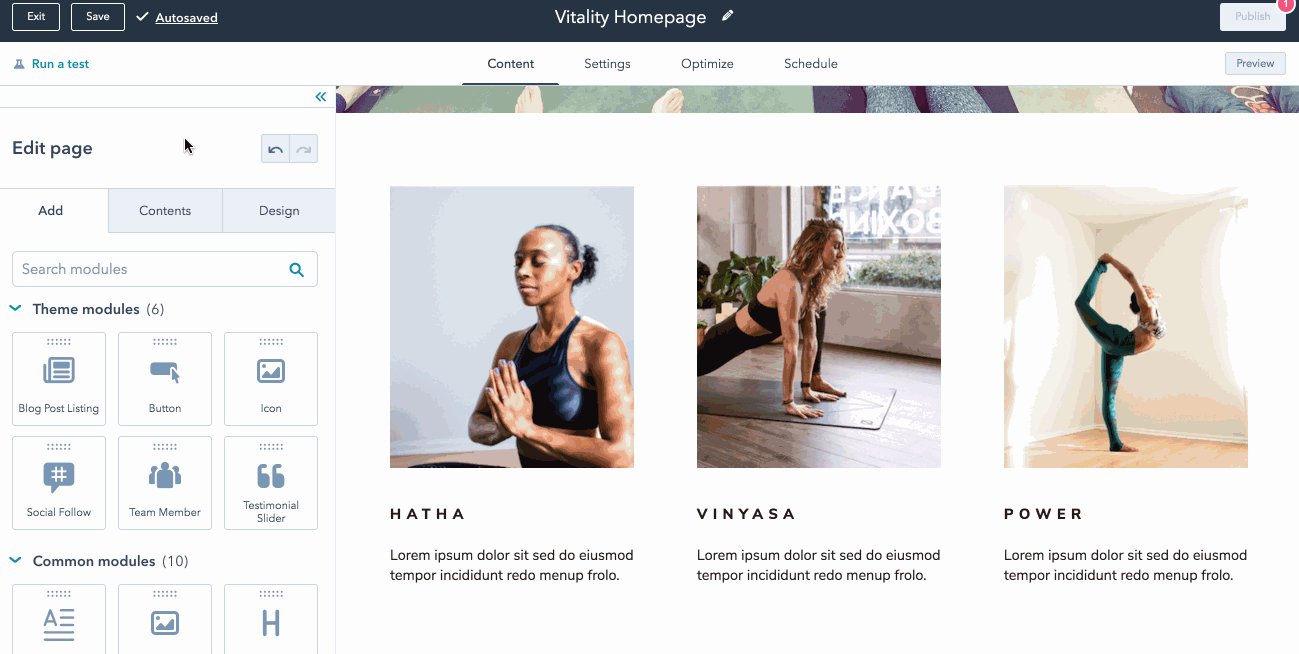HubSpot has released their long-awaited CMS Hub in two tiers, HubSpot CMS Professional and HubSpot CMS Enterprise, both are exceptional and are aimed at two different markets. This blog post takes a look at what features each tier has and who they’re aimed at.
It’s difficult to think back to a time when having a website was optional for businesses. In 2020, your website is most likely the first point of contact any prospective customer will have with your business. Your website represents your company and could be the determining factor on whether or not someone decides to do business with you.
Today’s tech-savvy customers expect more functionality and personalisation from their website experiences, putting businesses under pressure to stay on the beat with their website functionality and their user’s experience.
Businesses usually start with the most basic of websites and then grow them to match their customer’s expectations by adding tools for security, lead captures, SEO, live chat and everything else…
When looking at the back end of these websites, you’ll find a patchwork of plugins and integrations holding it together. The whole experience of managing and maintaining such a website can become extremely painful, as overtime plugins become outdated and integrations incompatible thus putting the security and performance of the website at risk.
Let’s take a look at the two tiers on offer:
HubSpot CMS Hub Professional:
CMS Hub Professional is an all-in-one system that creates a wonderful customer experience, built for companies who are looking to grow but feel that their CMS (content management system) may be holding them back due to its constant need to be maintained and kept up to date.
In CMS Hub Professional, HubSpot has evolved their current CMS by adding new features such as themes, drag and drop editing, dynamic content, SEO Tools and forms.
Themes
Themes give marketers the ability to make simple changes on the go, whether it’s adding a new event or changing the colour palette on a website page, without the need for taking it to a developer.
Themes are built on a set of assets like modules, templates, and CSS files that a developer can customise to create a friendly content editing experience for the marketer. Once the developer has created the theme, the marketer will be able to easily edit the entire website within the “guardrails” of that theme.

Drag and drop page editing
There’s a certain frustration that I’m sure we’ve all experienced when all the elements are on the page but don’t quite fit together, maybe a column might be too narrow, or the CTA on your landing pages is misaligned.
In the past, this would’ve meant updating the page template, meaning that every single page using that template would be impacted.
What if you only want these changes on one particular page? On all pages built using themes, you’ll be able to edit the content on your page using the new drag and drop editing feature.

Dynamic content with HubDB
Creating dynamic content is an easy way to begin growing your site at scale. Using HubDB, you can create web pages that reference content within your data table. If you change the content within your data table, that information will be updated wherever that data table is referenced — across your entire site.
HubSpot CMS Hub Enterprise:
CMS Hub Enterprise is the next level up from CMS Hub Professional. It comes with everything found in CMS Hub Professional and more features like serverless functions, memberships, activity logs and brand domains. CMS Hub Enterprise gives scaling organisations the opportunity to build compelling and dynamic marketing experiences.
Let’s take a look at the features that make this possible:
Memberships
With the growing demand for unique and memorable experiences, personalisation in 2020 goes beyond just changing the first name field of the website visitor, in some cases, it may mean serving up entire web pages with content tailored specifically for them. This means providing site visitors with tailored recommendations based on their past interactions with your company or providing your best customers access to premium content.
This is all possible with memberships in CMS Hub Enterprise. Using memberships, you can create content that’s tailored to each site visitor.

Serverless functions
Have you ever needed to solve real-time issues on a website that would influence whether or not you go ahead with the purchase?
Decisions such as finding out the instalment payback period based on your unique inputs or maybe you’re completing an event registration and need to to see details about the event as you’re signing up?
These web apps, that provide these delightful experiences, usually rely on server-side code and managing servers is one of the biggest pain points of running a website.
With serverless functions in CMS Hub Enterprise, you can build powerful web apps that extend the functionality of your website. And your dev team never has to worry about managing servers or how a spike in traffic might impact your performance.
Activity logs
Keeping track of website changes and updates is straightforward when the business is small but the business grows and more people are added to the team this becomes nearly impossible.
Activity logs and user permissions give you more control over who internally has access to your content, and the ability to see exactly what changes your team is making to your site.
Brand domains
As your business scales, you may reach a situation where it makes sense to have multiple websites. Maybe you expand into two business lines, or you need to create a microsite for a specific subsection of your business.
CMS Hub Enterprise comes with two brand domains included, and you’re able to purchase more as needed and as you grow your business, you’ll be able to build out and report on two or more separate websites within the same CMS instead of having to juggle multiple systems to meet the needs of your website.
HubSpot’s CMS Hub is designed to work with the other three hubs (marketing, sales and service hub), it improves the developer’s experience for creating template and theme assets and makes the marketer’s life a bit easier by giving them more control over how they customise pages and create blog posts. By streamlining the tools and adding more functionality, HubSpot’s CMS Hub has given us a glimpse into a world of possibilities and have positioned themselves as an appealing choice for any business that is looking to scale through inbound marketing.
